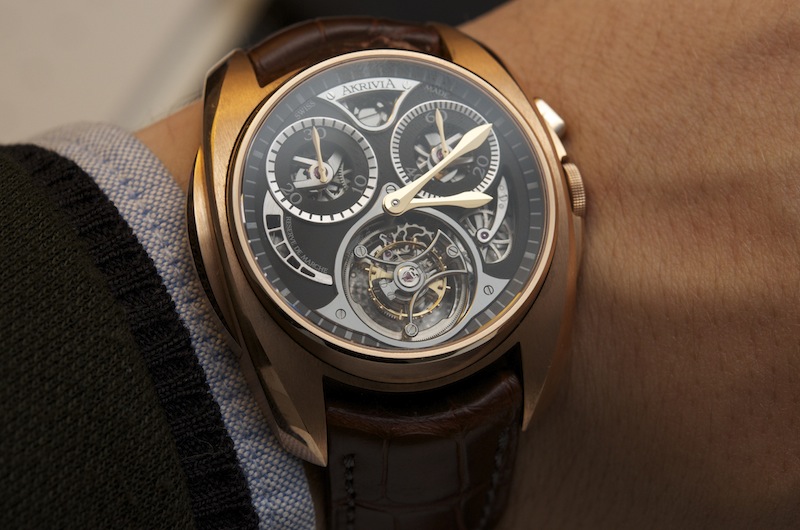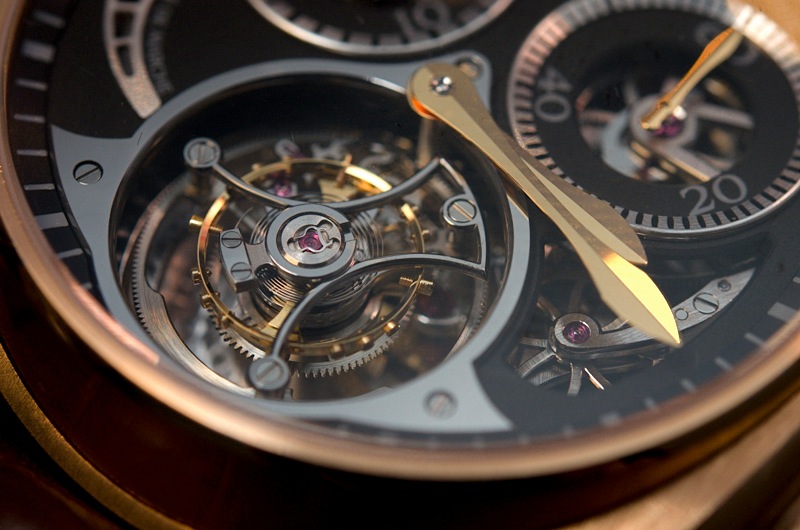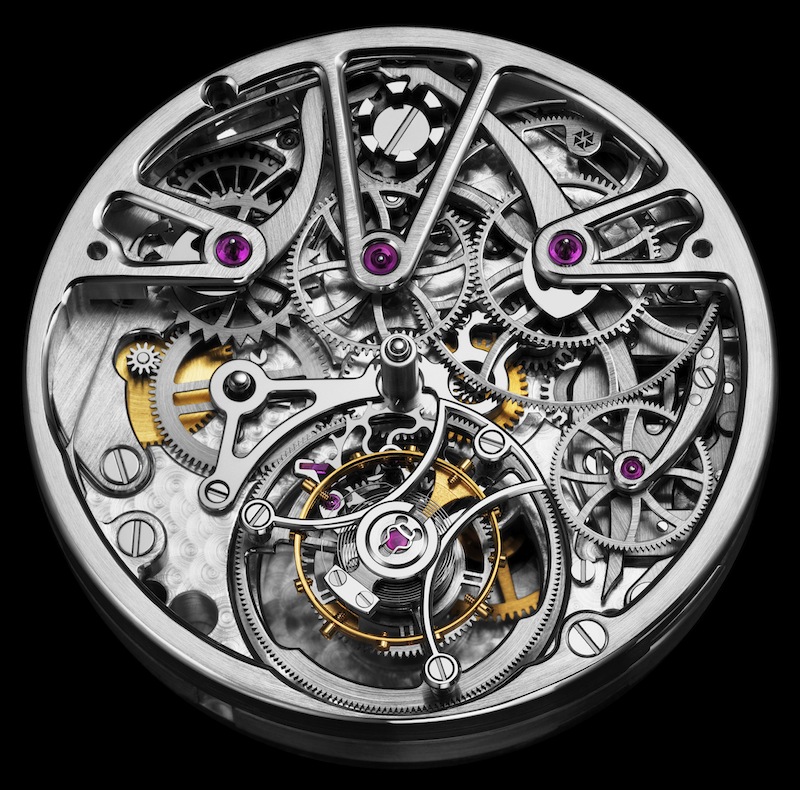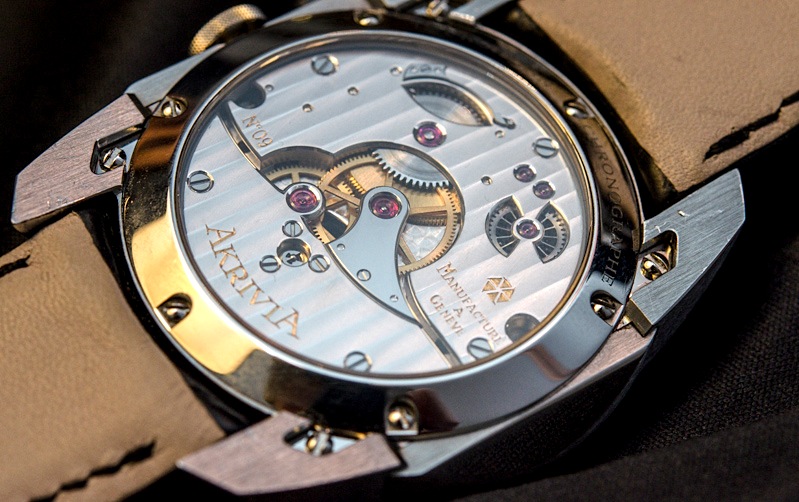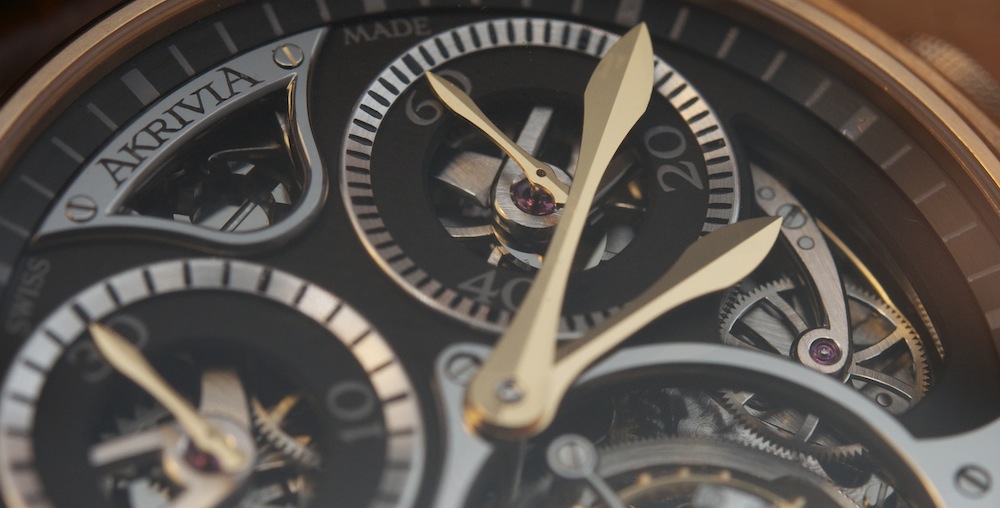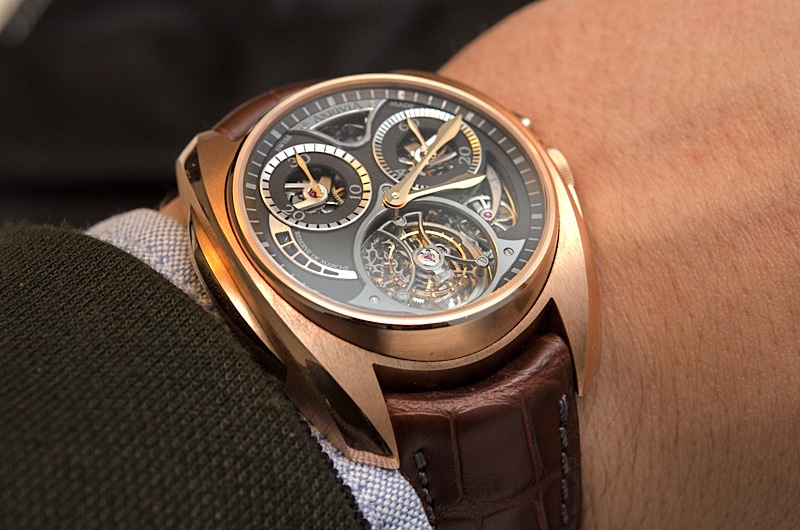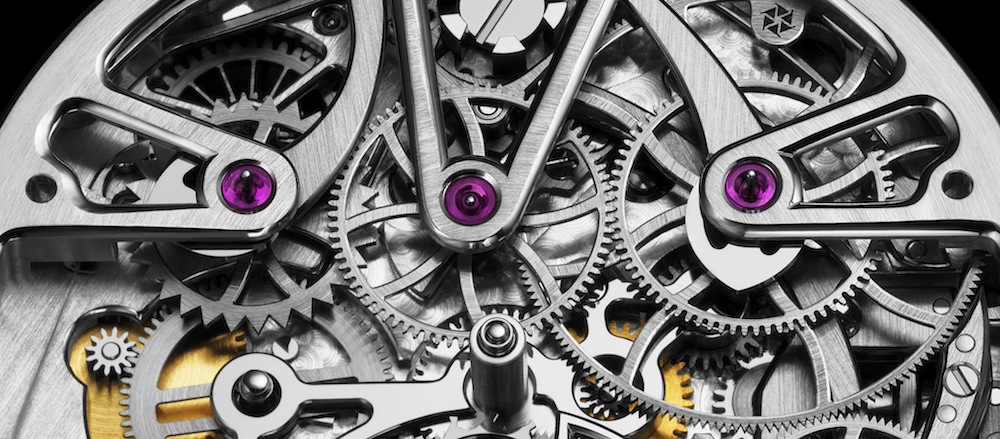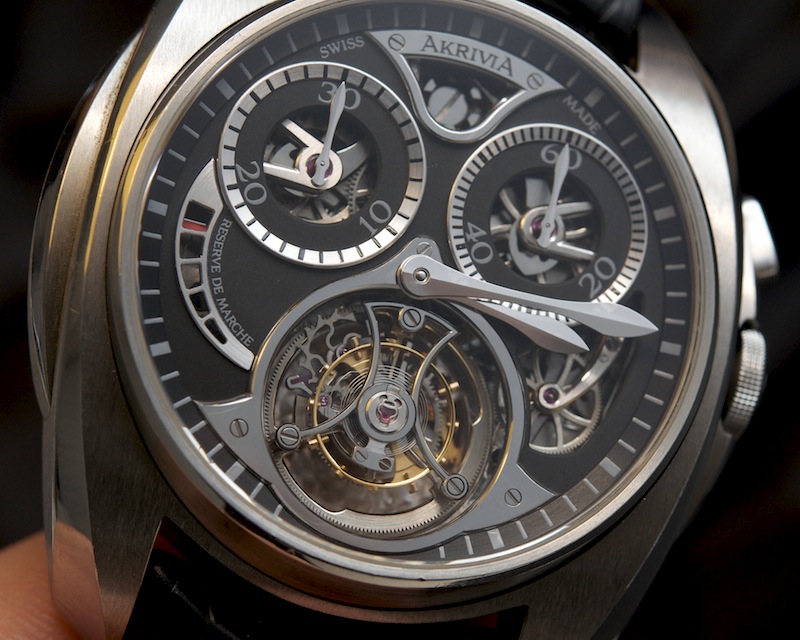Geneva-based AkriviA is one of the more recently established independent haute horlogerie brands with a foundation that goes back to the now defunct innovative BNB Concept movement maker and designer. Being an independent in the world of modern watch making means the brand in question is not related to luxury groups or major watch manufactures. While there are a number of trade-offs to be made – such as lack of vast financial and technological resources – one of the major advantages is that their engineers, designers, and watchmakers are not bound by the strict and heavily moderated design philosophies that exist at larger more established brands.
AkriviA currently uses a modified complex movement from BNB Concept that you may recognize. They decorated it to their own standards and created their own – and rather unique – dial and case-design. The result is their first offering, the straightforwardly called Tourbillon Monopusher Chronograph, which they presented to us in November 2013 in London at the fine watch exhibition SalonQP.
AkriviA was established less than two years ago by two young watchmakers, Rexhep Rexhepi (formerly of BNB Concept) and Etienne Deschamps. Despite the fact that they are at relatively early stages of their watch making careers, they both have gained invaluable experience during their apprenticeships at the prestigious manufactures of Patek Philippe and Chopard respectively. Rexhep, following the four years he spent at Patek, went on to work with BNB Concept (which went bankrupt in 2010 and whose best assets were acquired by Hublot), F.P. Journe, and presently at MHC (Manufacture Haute Complications in Geneva). Etienne left Chopard to pursue his studies in management. They established AkriviA in 2012 but their first watch, the Tourbillon Monopusher Chronograph debuted in Baselworld earlier this year.
The concept clearly aspires to serve as a strong starting point for the brand. It features a one-minute tourbillon, a mono-pusher chronograph, an indicator for the claimed 100 hours of power reserve and a unique case design that consists of 30 components alone. I will say that before our meeting, I did feel slightly concerned about this ambitious list of features coming from such a young brand and its first creation. Having said that, I was in for a number of genuinely positive surprises!
With the brand avowedly positioning itself in the haute horlogerie segment (where no watchmaker could ever aspire to succeed without an exceptionally finished and uniquely designed movement), I was particularly looking forward to examining their first caliber up close and in detail. As I mentioned above, the movement was basically engineered by BNB Concept several years ago. You will find modified versions of it in this Hublot piece or in this Romain Jerome Chrono Tourbillon. Those are remarkably different pieces that represent an easily distinguishable approach to the same movement. It should come as no surprise then that Rexhep had his own idea about how to make this rare movement shine again and so, with the help of his colleagues at MHC, he redesigned gears, bridges and other parts to make it unique to AkrviA.
It is a “dial-heavy” movement, meaning that most bridges, wheels, functions and mechanisms are located on the dial side, with the one-minute tourbillon undoubtedly dominating – and animating – the front of the watch. Its components and cage are all beautifully crafted and hand-finished, and it is as much of a joy to look at as any other exposed single-axis tourbillon. Although it is nothing new or boldly innovative per se, it still is extremely easy to get lost in looking at it.
Something less common about its structure is the external gear around the tourbillon, as revealed by the extra-large opening at 6 o’clock. Let me explain. On the image above, at the movement’s four o’clock position, you will see that there is a small, disengaged gear, just millimeters away from the large external gear around the tourbillon. Its function is that upon starting the chronograph, this gear will mesh with the large gear around the tourbillon and hence, through the set of gears laid out on the right hand side, the chronograph will start measuring 60 seconds at the 2 o’clock sub dial and 30 minutes at the 10 o’clock sub dial. It is a rare treat to see such an uncommon solution, not to mention it being exposed on the dial side.
The case has a rather complex construction comprised of three main parts. To begin with, there is a cylindrical casing for the movement that, as I was told, can be lifted out easily after removing a couple of screws on the case back. Then there is an external “shell” which surrounds the movement’s cylinder and extends into the lugs. At first this piece appears to have a rather simple curved shape to it, however, after further inspection I discovered the numerous ways and directions that the case was actually curved to create a shape that first reminded me of the Curvex cases seen from Franck Muller. Finally, there are two additional inserts, one on each side.
These help to create an elegant tonneau-shape for the case, while the one at the three o’clock position also serves as a crown-protector. As Rexhep told me, these three major elements can be made from different materials and be combined (by the owner!) in various ways. Although that might not be quite as easy as it sounds, I know I would love to try that and make good use of the skills I acquired as an infant LEGO addict.
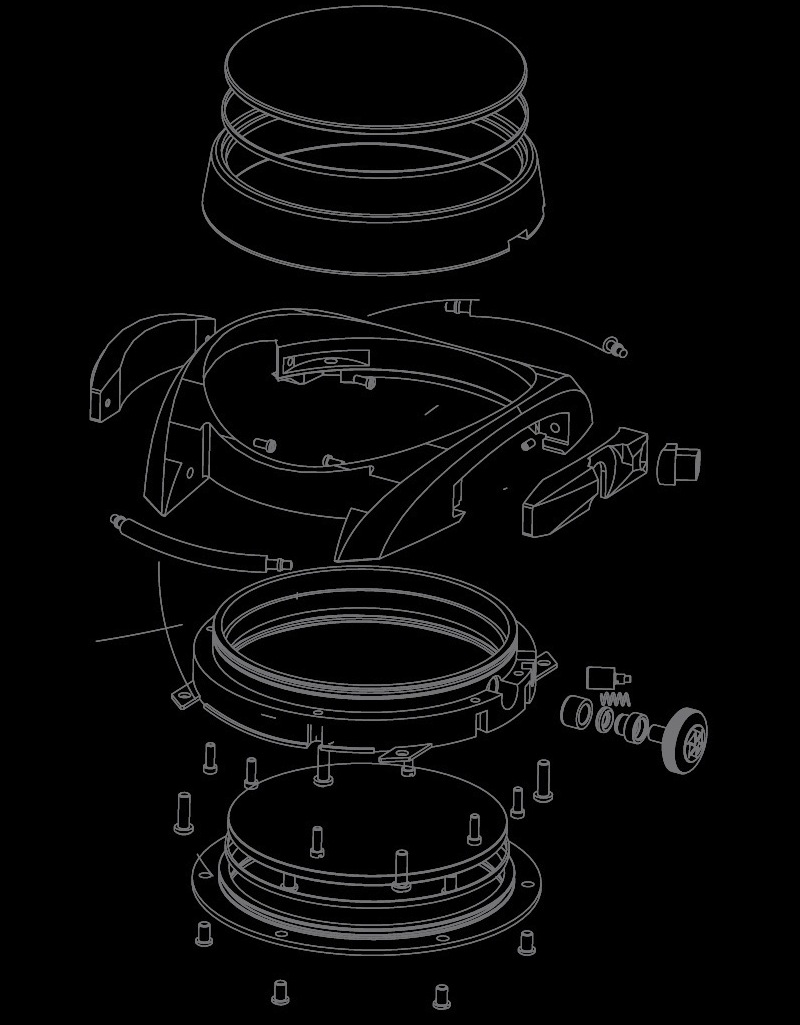
Judging by the quality of the movement and the complexity of the case, we could say that AkriviA did pay attention to most details. However, actual wearability often slides down the list of priorities when it comes to creating such high-end pieces and so the strongest point of this watch was not the movement or the construction of the case but wearing comfort.
As always, it is easier said than done, but in this case the watch fit snugly and comfortably on my (much too small) wrist. That, primarily, is a result of the design of the case and case back, and the way the straps are integrated into the shape. It is rare for a watch of this size – 43mm in diameter and above 50mm lug to lug – to feel as if it wasn’t even there, but thanks to the curved shape of the case that is how it felt from the moment I put it on my wrist.
One thing I was not so sure about – before having the chance to see the watch in the metal – was the dial layout. For me it looked like a stylized image of an owl and I could not decide whether this was intentional nor if I actually liked it. Interestingly enough, when I saw the watch and I tried it on, this image disappeared and I could concentrate on the great number of flawless details and an overall image that I could best describe as very young and fresh.
Surely, in many ways this watch adheres to traditional standards, but as I had it on my wrist I felt that it could plausibly be a more fun – but nonetheless high-quality – companion. It was perfectly legible, all its components proudly wore their immaculate finish, and of course there was the tourbillon at the center of attention, spinning with its well-known, traditional beauty and every drop of modern ostentation.
Therefore, once we summarize what AkriviA’s first watch offers, we are left with a mixture of fine craftsmanship, the evident presence of motivation to create something new, and then the conflict of this motivation with the strict rules of high-end watch making. For a debuting piece, the Tourbillon Monopusher Chronograph is a surprisingly complex and undoubtedly well-made offering, yet I hope that in the future they will be able to find, and more openly express, their own style – while building on their presently possessed strong points. The Tourbillon Monopusher Chronograph will be limited to only ten pieces in steel and five pieces in red gold with prices of $160,000 and $195,000. akrivia.com

